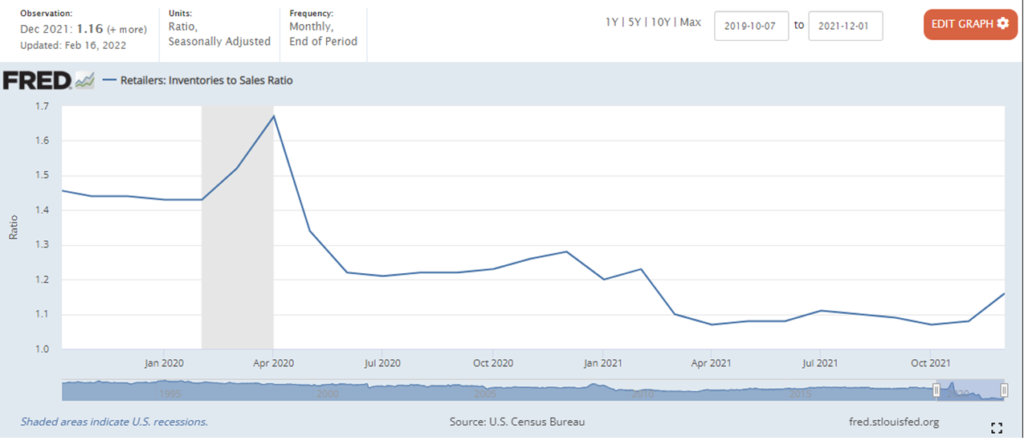American consumers spent much more in January than ever before. According to the Federal Reserve (see first chart below), November’s previous record was $569,560 million. January retail spending was $577, 740 million for what is usually a comparatively slow month.
For good reasons, commercial enterprises, economists, politicians, and many more prefer strong US consumer spending. But from a supply chain perspective, this persisting pattern of very high demand has been problematic. We have essentially been on flood-watch — and taking flood mitigation measures — for most of the last year.
New data, however, also offers some tantalizing evidence that the adaptability and creativity of these mitigation measures may be paying-off (more and more and more). In December we also saw a significant increase in inventories (see second chart below). If we can continue to build inventories, then by summer the disequilibrium of supply and demand could be significantly reduced in most product categories. At the end of 2021 we were at an overall inventory-to-sales ratio of 1.16 (up from 1.07 to 1.08 for most of 2021). A ratio closer to 1.4 has been historically healthy.
The January Producers Price Index can also be read to suggest strong upstream behavior to fulfill anticipated strong downstream demand. (Less sanguine readings are also possible, but this morning I am apparently positively inclined.)
Next Tuesday, February 22, there will be an update on the M2 money supply for the month of January. The last week in December reported a (recently) rare softening in the ultra-high supplies of cash available. If there has been continued gradual softening over most of January, I would take this as good news. From a supply chain perspective, if there is strong demand (sales) and there is reasonable evidence that strong demand can persist (cash reserves available to consumers) and inventories are being rebuilt, then our networks are moving toward a more sustainable, predictable, much less volatile flow pattern.

